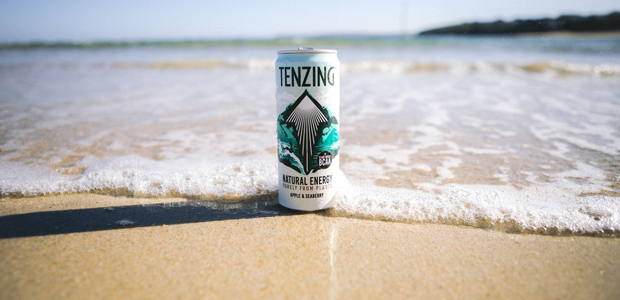
Tenzing: When You Need That Mt. Everest Energy
In recent years, energy drinks have almost become a parody of themselves. The internet is rife with mocking videos of men in reflective visors riding dirt bikes, howling barbarically as drops of radioactive energy drinks dribble down their forehead.
The caffeine content is soaring (many cans now have warning labels), most of the ingredients are superficial, and if you drink one, you’ll presumably suffer that inevitable caffeine crash within a few hours.
Yet that doesn’t mean they don’t deliver on their intended promise, which is providing energy…right? But what if you want something a bit more sustainable, not just for the environment, but for your sanity and jitters as well? Something that doesn’t trigger the need to drive a monster truck off a mountain while shooting two flame throwers in the air.
Enter Tenzing, named after Tenzing Norgay, one of the first two men to ever scale Mt. Everest back in 1953. Literally taken from an ancient recipe in the Himalayas used by sherpas to boost energy and immunity, they boast all natural ingredients providing pure plant power, are carbon negative and rainforest alliance certified, BPA free and 100% recyclable.
I’m joined by Tenzing founder, Huib Van Bockel, who talks about his quest towards a more sustainable future, and the need for an all-natural energy drink, something that didn’t exist before Tenzing.
The Start
Huib:
When I myself was climbing Mt. Everest and discovered this ancient recipe, I was shocked by the effect it had on me, and even more shocked by the lack of jitters that came later. I felt energised with no comedown. A lot of energy drinks today have up to 320mg of caffeine and loads of sugar, and now it’s just like they’re trying to outdo the other guy by adding more and more caffeine, and I didn’t like it, nor is it very good for you on a regular basis. Tenzing only has 80mg of caffeine, and when we started making the recipe I insisted on removing 60% of the sugar content as well. Initially the team was surprised, asking what I wanted to replace the sugar with, but I didn’t replace it with anything, I just want to keep it natural. I wanted the drink to be kind to the body and mind of everyone who drinks it.
Anton:
And what were the initial reactions?
Huib:
It has a completely different taste to traditional energy drinks, but it is much more refreshing. Many people who try Tenzing for a bit, if they go back to standard energy drinks they immediately think oh my god, what is that? The sugar gets stuck to your teeth and they can be overwhelmingly sweet, and I think that’s why we’ve been growing five times faster than the average energy drink market. Younger people are more cautious about what they put into their bodies, and especially the sustainable effect that these products are leaving on the environment.
Anton:
Tell me more about the sustainable aspect of Tenzing and having all natural ingredients.
Huib:
Funny enough, that wasn’t too hard to achieve. Think about it, people have getting energy naturally for thousands of years, and this recipe is based off an ancient recipe too, so the new energy drinks only keep it artificial because it’s cheaper. That’s also why we have Mt. Everest on the logo, as a homage to what inspired me in the first place, and to promote a more natural, healthier way of living.
When it comes to how we reduce our carbon footprint, we get our green tea from Kenya and replaced their coal stoves with bio gas stoves, we invest in wind farms, plant trees, and are doing everything we can to offset our emissions.
Anton:
I imagine getting a food product into stores must be quite difficult with all the regulations, how did you manage to get it into all the big wholesalers?
Huib:
At the start we had no idea how to do that, but I thought that getting a flag with Tenzing and Sainsbury’s on it would work, and I knew some people who were making the journey up to the top of Mt. Everest, so I sent them this flag and took a photo with it at the very top. Then I contacted Sainsbury’s again despite not having a meeting set up with anyone, showed them the photo and they immediately assumed it was me holding the flag because they couldn’t see the person through all his snow gear, and they seemed very impressed. But it took a lot of resilience and a lot of rejections!
What does the future hold in store?
Huib:
I have big hopes for the future, but so much of it just has to do with the current mindset of young people today. They’re caring about the environment, sustainability, and are so conscious over what they put in their body. And due to the success we’ve had and the positive response, with the help of Imperial College London, we’ve created an app called the Tenzing Clean Air Tracker, which allows you to track the air quality you’re running through.
As long as I’m on the path to helping create a cleaner, healthier, and more sustainable future for all of us, then I’ll feel like I’m doing a good job.

